Railway Station Renewal
Project Specifications
Architect – Zaha Hadid Architects (ZHA)
Design – Patrik Schumacher
ZHA Director – Gianluca Racana
Project Directors – Ludovico Lombardi, Michele Salvi
Project Associate – Davide del Giudice
Project Team – Maria Lagging, Richard Maekallas, Alexandra Fisher, Jose Navarrete Deza, May Harper
Sustainability Team – Carlos Bausa Martinez, Megan Smylie, Taras Kashko, Vera Kichanova
Consultants
Local Executive Architect – CLOUD architektai
Engineers – Sweco Lietuva UAB
Landscape Architect – LAND srl
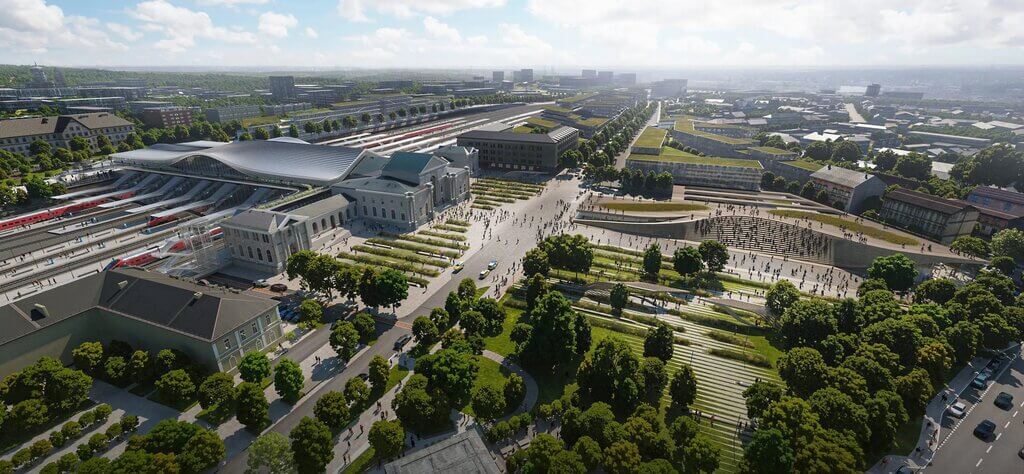
Source: rinnovabili.it
This commute-based project by Zaha Hadid Architects has been ranked first in a design competition for the renovation of the Vilnius Railway Station renewal. The design is centric towards pedestrians and cyclists although it performs a thoroughly commute based function. It envisions creating new civic spaces in the city of Lithuania to embrace it with nature. It is famously named the ‘Green Connect’ which consists of an integrated transportation hub for the new age civic spaces in the city. Let’s see Vilnius railway station renewal.
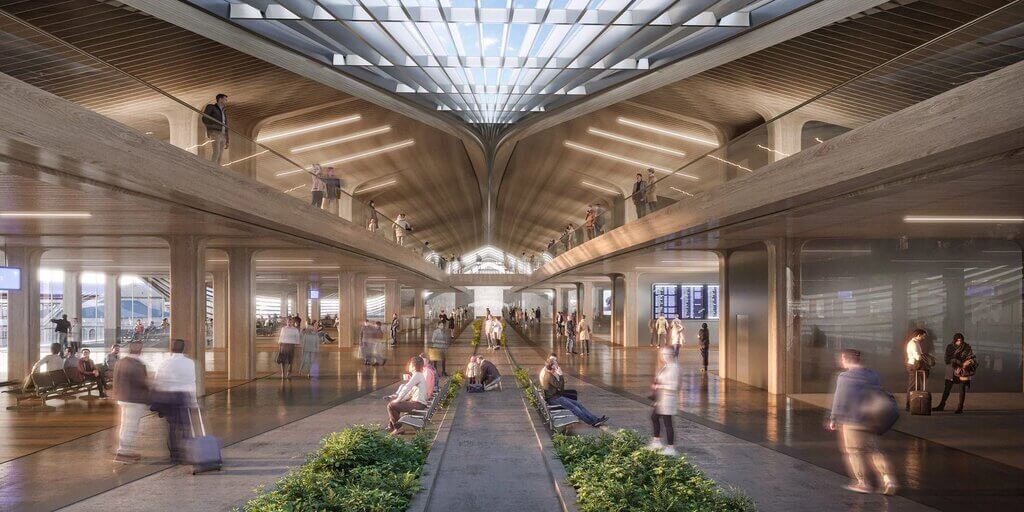
Source: dezeen.com
Following Hadid’s unique perspective towards fluidity in design, the structure follows a similar language of fine lines with layered naturistic elements. The undulating roofing of the structure is an added aesthetic that creates an overlap to provide ample functional as well as visual exposure.
Zaha Hadid Architects (ZHA) recently released a press statement stating, “The evaluation commission of the international architectural competition to select the best concepts for the redevelopment of the Vilnius railway station complex and surrounding area awarded the highest ranking to the proposal by Zaha Hadid Architects.”
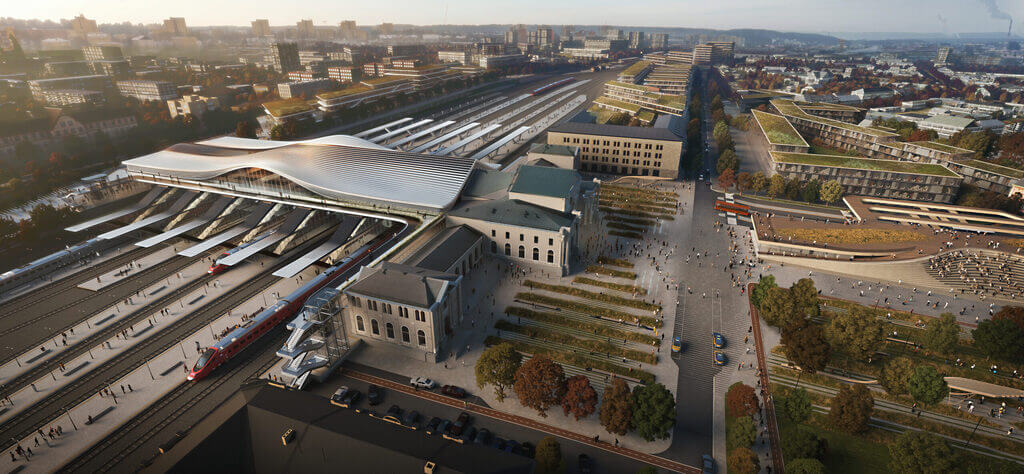
Source: inmobiliare.com
The project was organized by Lietuvos Gelezinkeli, from the company LTG Indra. It is responsible for managing the Vilnius City Municipality and the country’s railway network. The project envisions renovating the existing railway station and also adds a 9,500 sq. m of concourse bridge. The length of this new concourse bridge is 150 meters with a width of 46 meters across the platforms of the railway station.
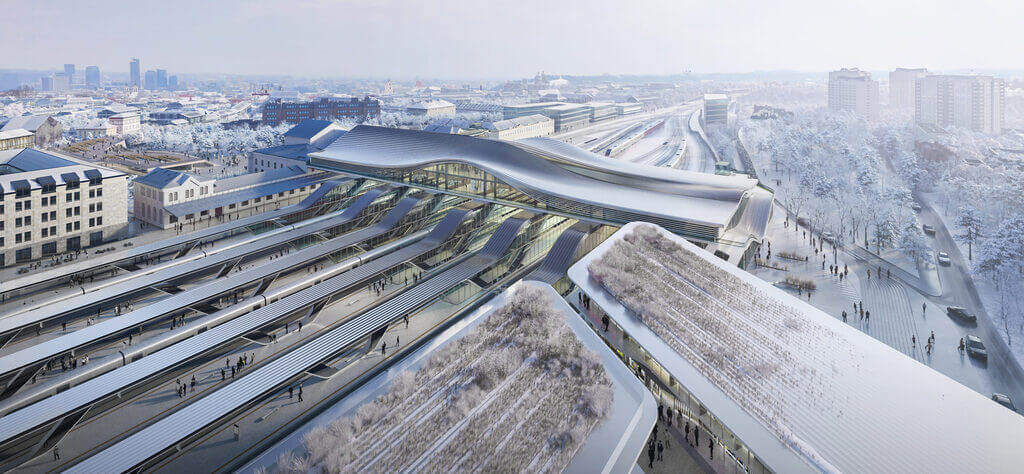
Source: globalconstructionreview.com
“The composition of the station’s new bridge gradually transforms along its length; from the pitched roof defined by the existing neoclassical station’s triangular pediment into softer geometries and volumes that reduce in scale to land at Pelosos Street in the Naujininkai district,” quoted Zaha Hadid Architects.
“A linear skylight along the length of the bridge and glazed facades over the railway tracks provide natural light and intuitive navigation through the concourse.”
The project also aims to relocate the existing car parking to a new underground and efficient car parking. It has a square and an adjacent park along with two civic areas with around 300 trees spanning across a 4000 square meters of landscape areas.
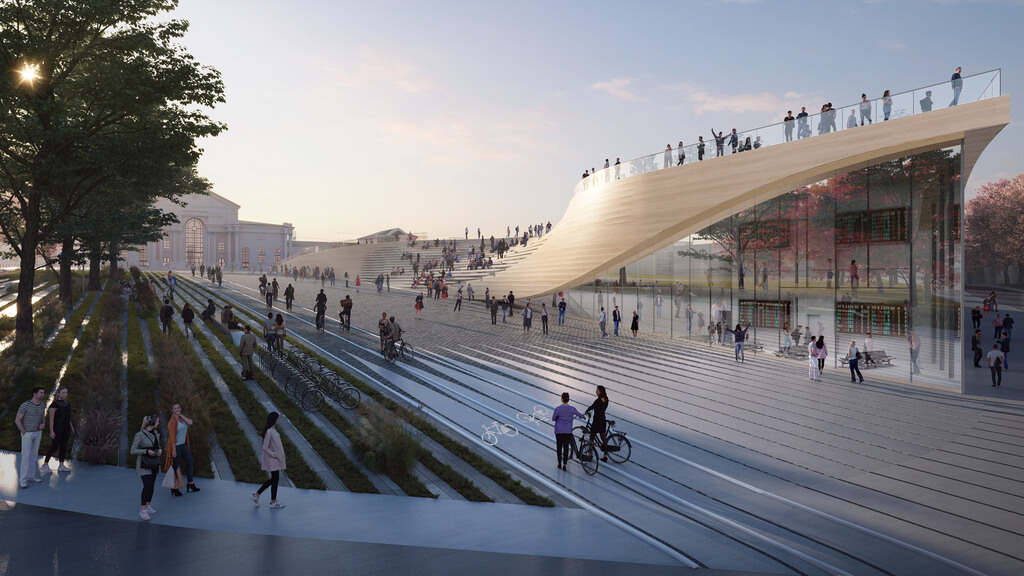
Source: adsttc.com
ZHA quotes, “The composition of the station’s new bridge gradually transforms along its length; from the pitched roof defined by the existing neoclassical station’s triangular pediment into softer geometries and volumes that reduce in scale to land at Pelosos Street in the Naujininkai district”.
Zaha Hadid Architects Design Scheme
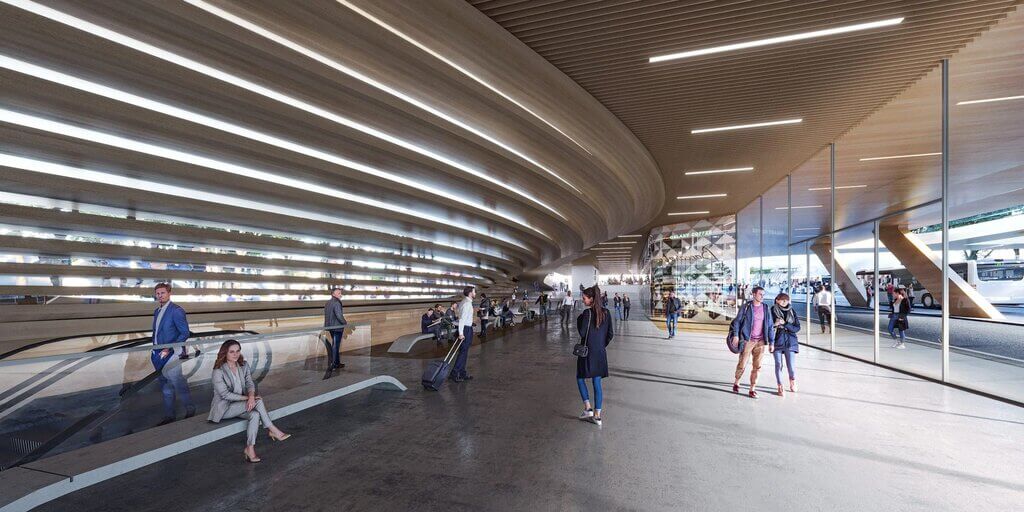
Source: dezeen.com
The Commute-Based Vilnius Railway Station Renewal by Zaha Hadid Architects Prioritizes Pedestrians
The design scheme goes incoherence to the city’s current ongoing sustainability agenda which has a strong emphasis on pedestrians and cyclists. Following this similar language, the Vilnius railway station renewal incorporates a new public bridge and connects it to the Naujininkai district. It connects the south side with the city center and the Vilnius old town.
The structure serves as more than a transport hub for national as well as local rail services. It aims to transform the existing rail infrastructure by removing the city dividers or barriers by uniting them into a connection. Vilnius currently serves as one of the core hubs apart from the Rail Baltic line, which also connects to Europe’s high-speed network.
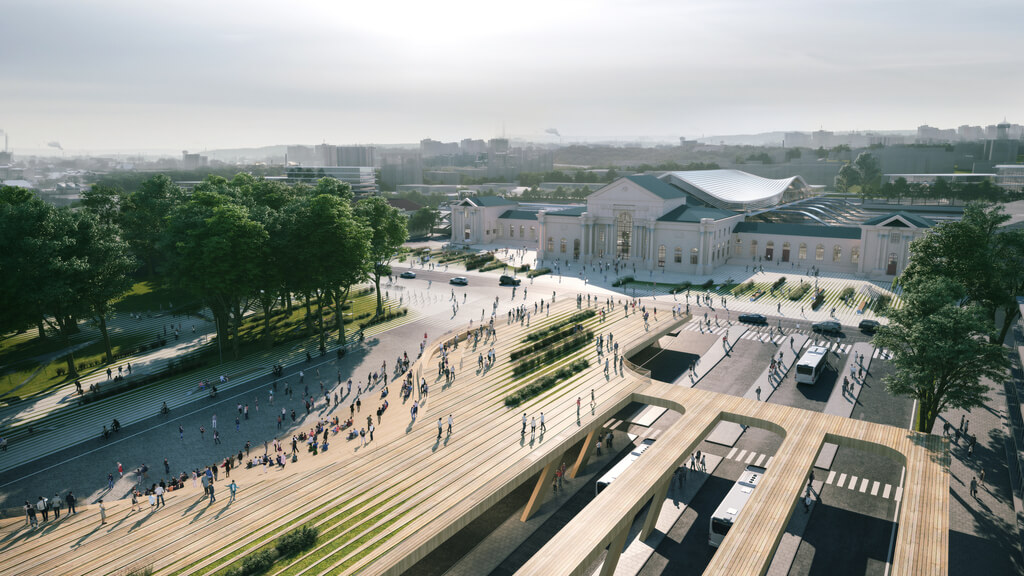
Source: adsttc.com
“The concept presents a unique, recognizable, contextually appropriate design for the new station terminal that creates a network of public spaces of the highest quality and establishes important connections between the Naujininkai, Naujamiestis, and Senamiestis districts of the city.”
“In addition, it successfully combines functional and aesthetic solutions and creates opportunities to convert the former railway maintenance yard and surrounding areas. Of course, this is only an initial idea that can be explored and developed in detail,” added Pakalnis.
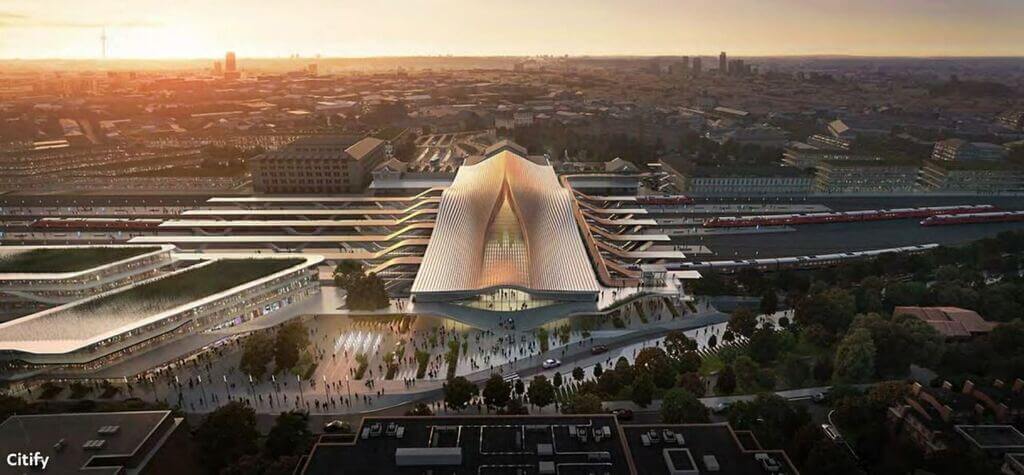
Source: nashaniva.com
The site will cover a 9500 square meter area that includes the renovation, the concourse bridge, and the reuse of the original station. The structure will also be incoherence to the existing background of the site.
The team at Zaha Hadid Architects will remove all the temporary offices and kiosks around the site, it will also restore the existing 9,000 square meter railway station. Post this, they will link the renovated station with the public transport terminal for the bus networks.
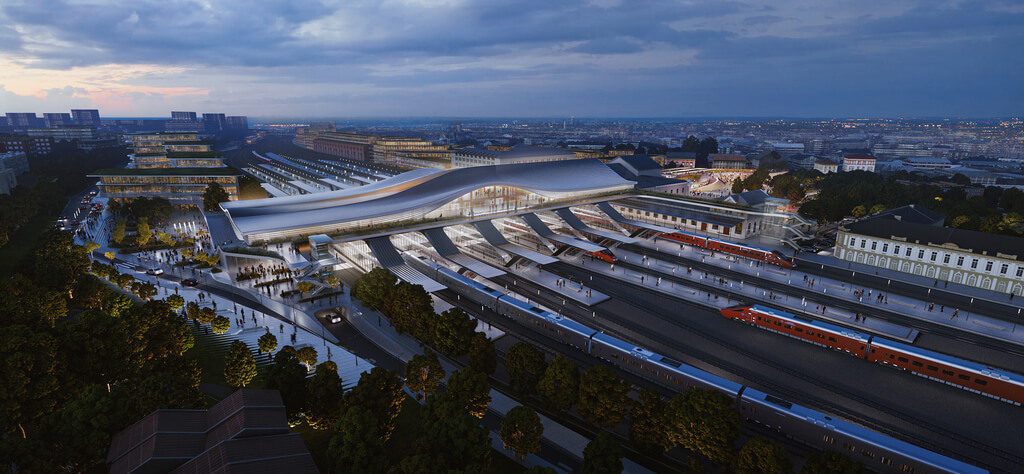
Source: adsttc.com
ZHA will also design an elaborate landscape within the Stories Square park along with the outdoor amphitheater and a ramp that will redirect the visitors to a public terrace on the roof.
The design will also include 4,000 square meters of landscaping with tree-lined avenues with main axes and several water gardens along with filtration of rainwater.
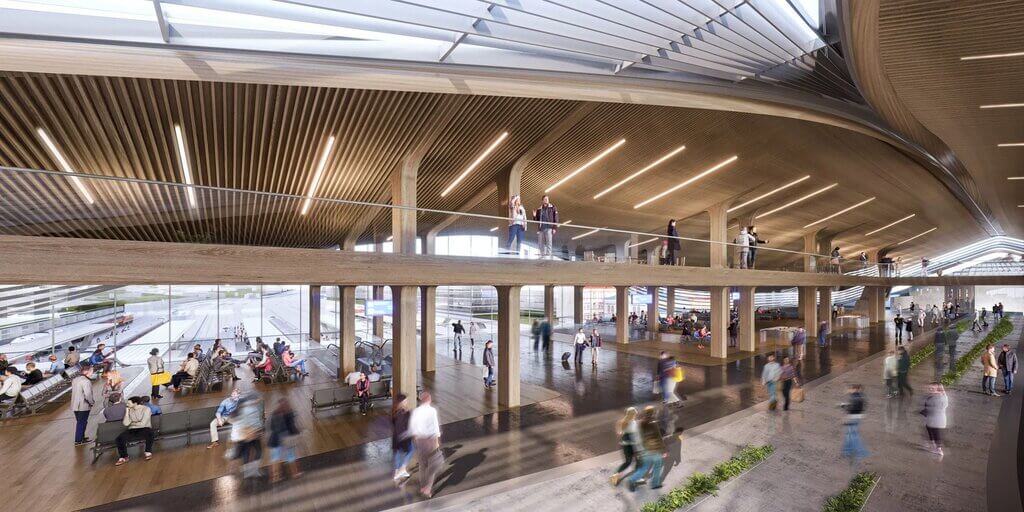
Source: dezeen.com
“We are already investing in the surrounding spaces and are ready to invest even more in the square, the streets, and the new, more comfortable and greener face of Vilnius,” Šimašius added.
“We received many strong proposals that can enrich the architectural face of the city. Designers of the commission’s preferred concept, Zaha Hadid Architects, know Vilnius and have extensive experience designing detailed projects that include the Rail Baltica railway station in Tallinn,” said Vilnius’ Chief Architect Mindaugas Pakalnis.
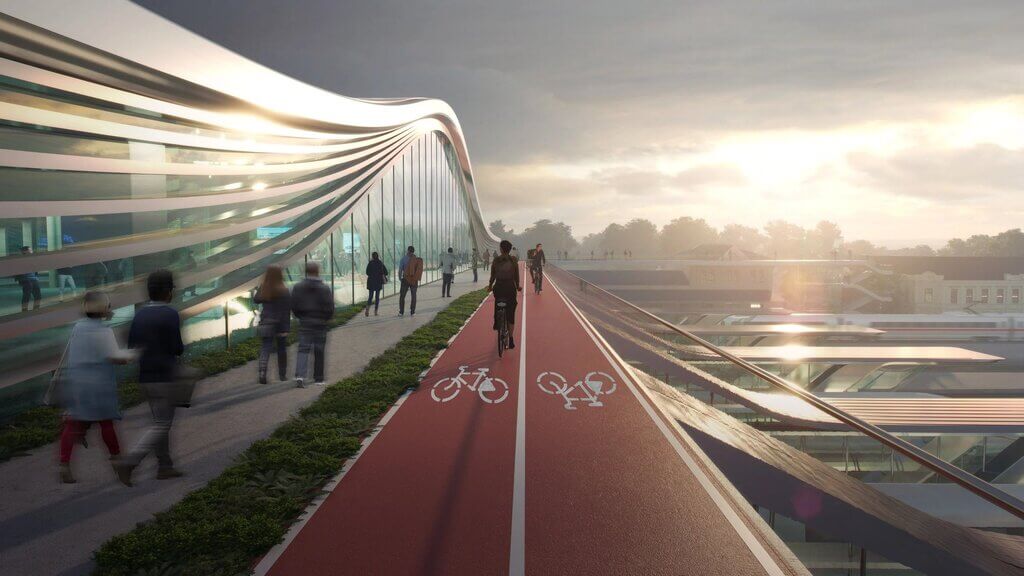
Source: dezeen.com
“Creating an interconnected series of natural habitats within the city, these urban green spaces are easily accessible and can be enjoyed by communities throughout the year to enhance wellbeing and interaction,” said ZHA.
The 46 meter wide bridge will be suspended 10 meters above the ground level. The roof has a fluid form with a terraced landscape with a bus terminal. The bus terminal is constructed with a lightweight and low embodied carbon laminated timber from locally sourced areas.
Sustainable Measures
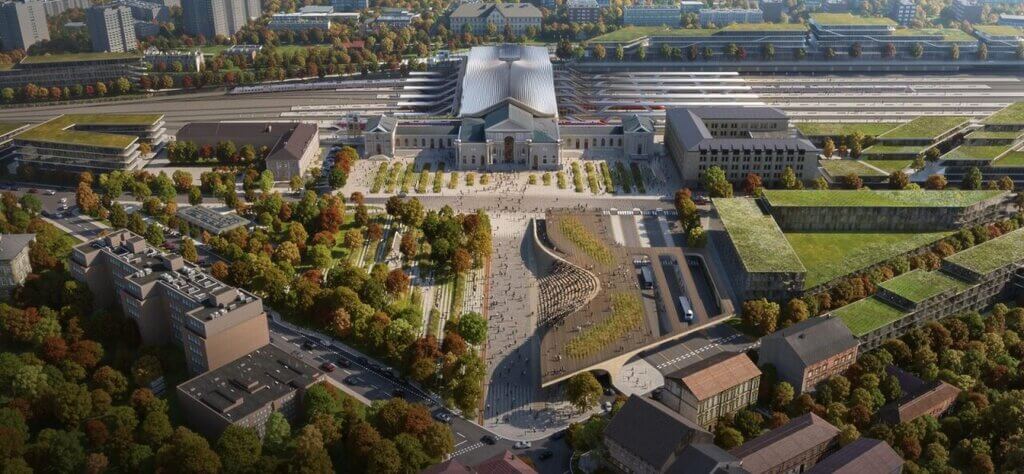
Source: dcdn.lt
The design integrates nature based solutions, like landscaping, green roofs, rainwater harvesting, heat insulation, etc. It also includes several energy prediction technologies and depolluting mechanisms to elevate the air quality.
“This analysis also determined the positioning of photovoltaic panels for optimum efficiency,” says the team
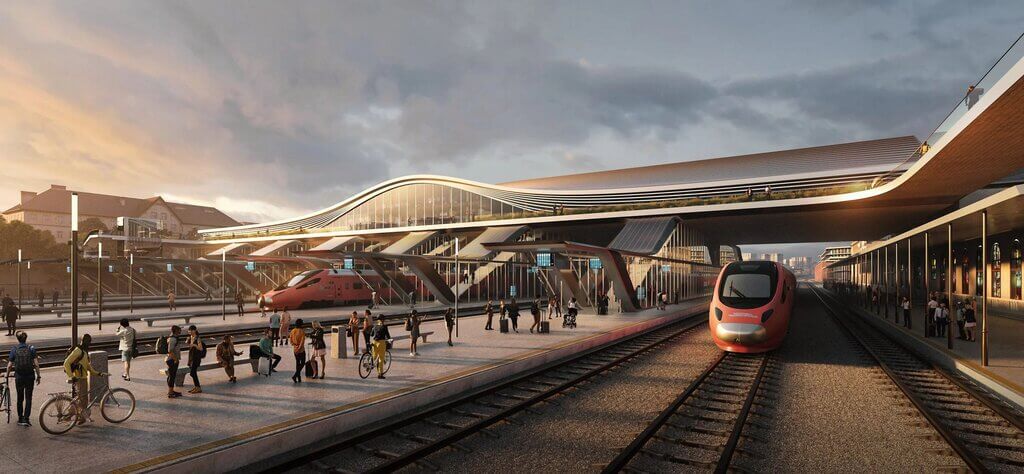
Source: dezeen.com
“We are working to ensure that the entire station district, including the railway station, bus station, public transport terminal, and square, meets the criteria for the city we are developing today: green, comfortable, and inspiring,” said Vilnius Mayor Remigijus Šimašius.
The team at ZHA devised a solar radiation analysis to map the facade performance which will be used to maximize sunlight indoors. It also helps in reducing glare in summer. This project is an ambitious step towards creating thoughtful urban interventions that give back to the community.
Railway Station Renewal
Top 5 Incredible Bungalow Architecture Designs In The World







